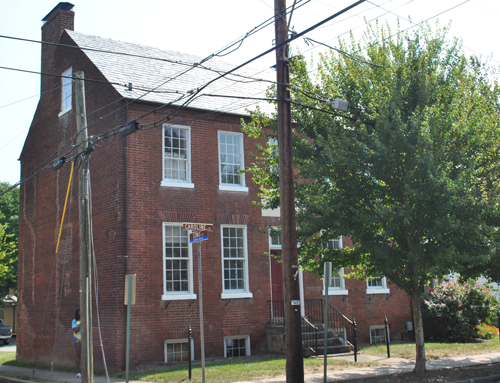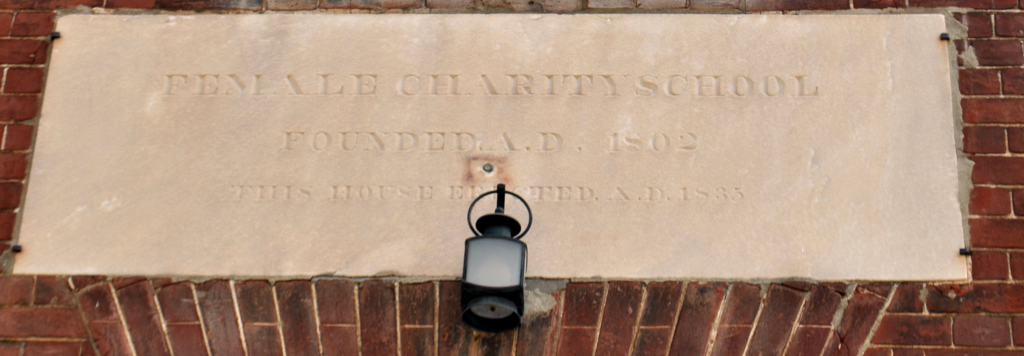Charity schools represented a movement that began in England at the end of the 17th century and spread throughout the next century. It was a movement that preceded universal education and it stressed education for the poor. In England it was a reaction to urbanization and rising population. It began with parishes and voluntary contributions of those in the church to provide education for the poor as well as other necessities such as food and clothing. Basic education – reading and writing was emphasized.
In America they were established in the Colonial period by leaders, such as Benjamin Franklin, as a way of preserving the English language and Anglicizing newcomers from alien cultures. The emphasis was on the development of character by imparting Biblical teaching. It reflected the notion that educational institutions should be at the forefront of solving problems associated with poverty.
The Female Charity School was established by the women of St. George’s in 1802 and was the first school established by the church. This was 7 years after a Male Charity School was created. (The Male Charity School assets were transferred to the Female Charity School in 1867. This included a Hanover School lot and Masonic Lodge building. The latter was conveyed to the Masonic Lodge in 1910).
One of their school buildings is still standing intersection of Caroline Street and Lewis Street at 1119 Caroline Street. An inscription above the doorway reads: “Female Charity School, Founded A.D. 1802, This House Erected 1835”. An addition on the right of the building was added during 1902. It was last used as a community house serving resident nurses in the Fredericksburg area.


The school was at first funded by local contributions in the form a lottery in 1804. The goal was to raise $5,000 with tickets of $5.
In 1808 Miss Sophia Carter of Berea in Prince William County left $10,000 for the benefit of poor females in Fredericksburg. The Virginia State Legislature incorporated it at that point with 8 trustees. This act indicated the school was established for “the education of poor females in the town of Fredericksburg.” By 1896, the trustees were to be elected from the “members of St. George’s Episcopal Church.”
Rev. Edward McGuire wrote about both male and female charity societies in the 1827 Diocese Convention reports. A combined 45 were being educated in them, “some of whom are clothed and boarded.” He also notes they were both connected to the church. “These excellent institutions share largely of the spiritual care and pecuniary assistance of the congregation, while, as objects of general favour and of general good, they derive from other sources a part of their support.”
Fundraising was a constant activity as observed by the number of articles in the Virginia Herald. They appealed directing to St. George’s congregation, they held fairs and conducted other fund raising efforts in Fredericksburg.
In 1860 governesses Elizabeth and Mary Vass oversaw 18 resident girls. By the time that John Goolrick wrote his history of Fredericksburg, published in 1922, he reports only 8 students (“eight happy little maidens”). In St. George’s graveyard is the grave of Anna Marie Goodwin (1775-1849) who was a president of the Female Charity School.
In 1930, the school was closed. While there is no more Female Charity School with students, there is still a board of the school which provides charitable gifts to need children. St. George’s has been the recipient of such gifts for preschool scholarships.
It was reported in the Vestry minutes in 1973 that a regular monthly contribution was made to the Department of Public Welfare and Social Service. Mrs. Alis Bailey at the time supervised the disbursement of funds for child care, dental work, food, clothing, school expenses and other needs. They estimated $2,000 is awarded yearly from returns of investments.
Along with Sunday Schools and Academies, it was a step toward universal education for children in the 19th century.
